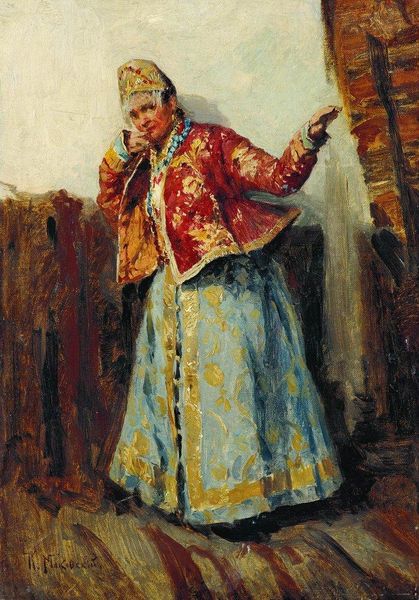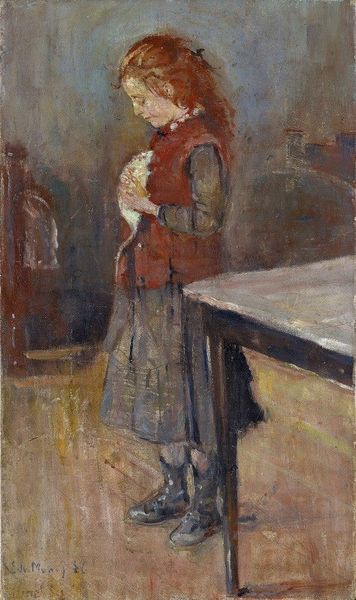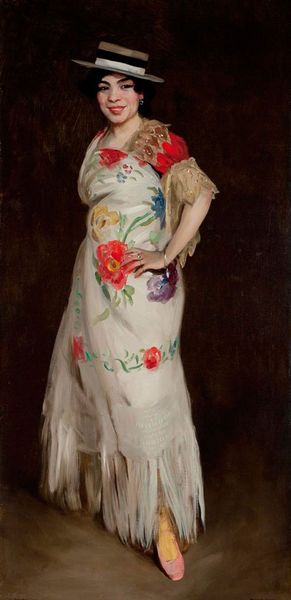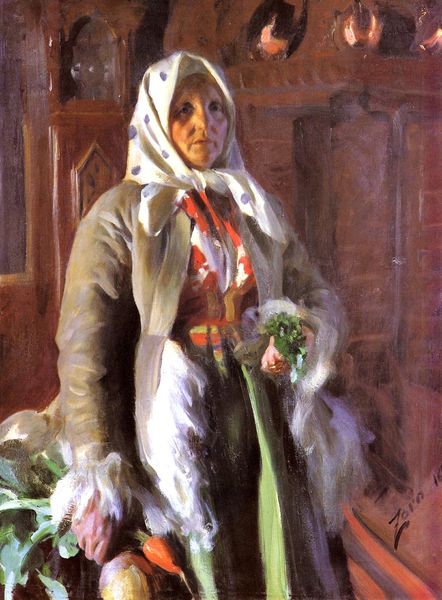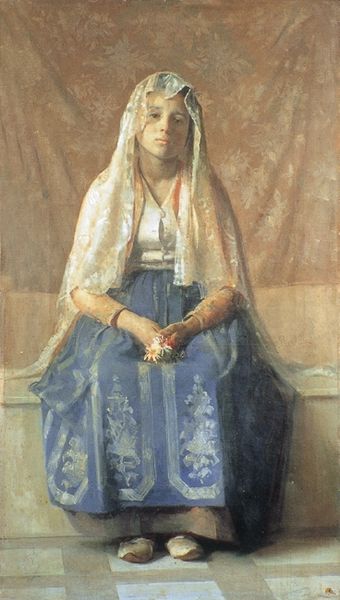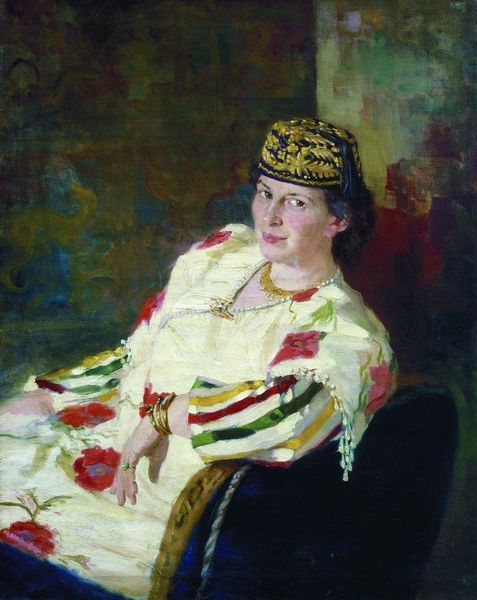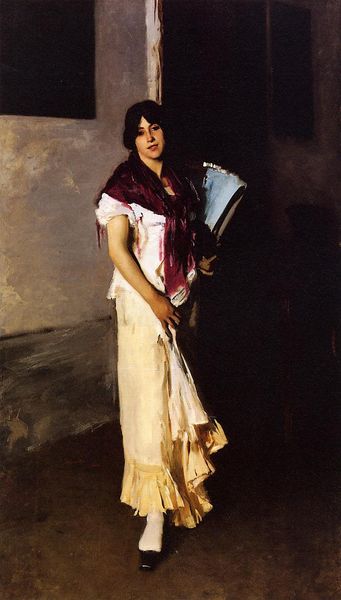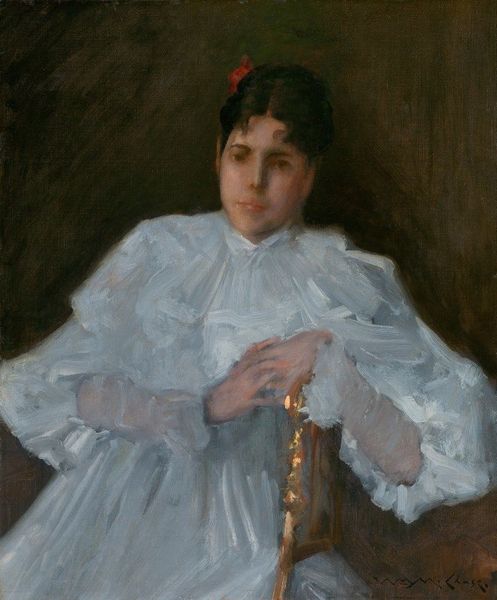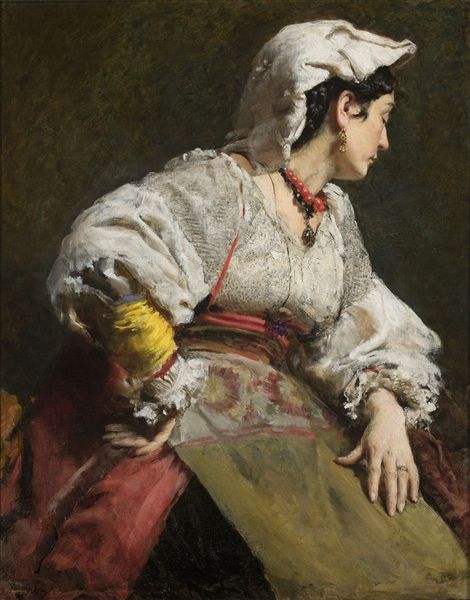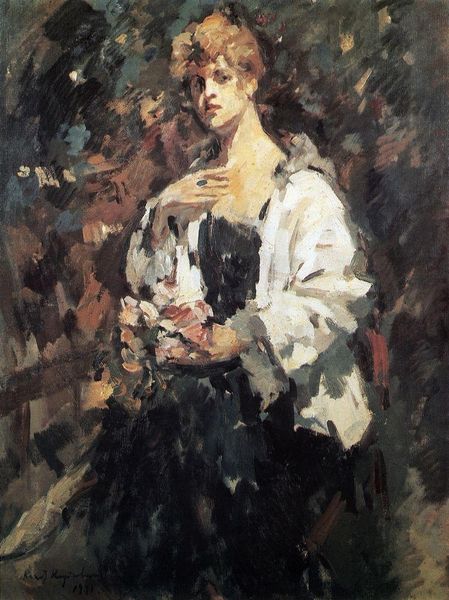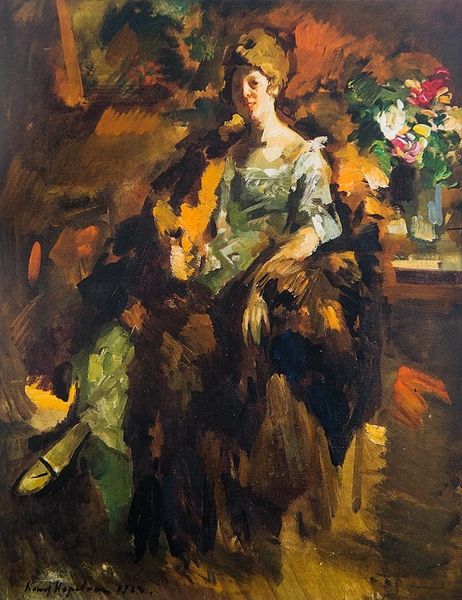
Copyright: Public domain
Editor: Anders Zorn's "Girl in an Orsa Costume," painted in 1911, depicts a young woman in what appears to be traditional Swedish garb. The bold use of reds and whites against the muted background is striking. What strikes you most about this piece? Curator: The fascinating element is the explicit record of the labor involved in its creation. Look at the visible brushstrokes, the textured layering of oil paint on the canvas. This isn't just an image; it's a document of a process, a testament to the physical act of painting. We often overlook how Impressionism transformed art into a depiction of production, not merely subject. Editor: That's a very interesting observation! It shifts my focus to how Zorn actually handled the medium itself. Are there social elements at play here, too? Curator: Absolutely. The costume, the "Orsa Costume," is crucial. It's not just clothing; it signifies a connection to a specific regional identity, to the craft traditions of Orsa. By depicting this girl, Zorn is engaging with questions of cultural heritage, with the ways identity is constructed and performed through material objects. And let’s consider the societal implications around this kind of costume- how, when and by whom it could be worn! Editor: So, it's not just about aesthetics but also about the labor of creation and the cultural context of the clothing. I never thought about approaching it this way. Curator: Precisely. Thinking about art through its materials and the conditions of its making reveals the broader social and economic forces at play. Consider the labor involved in creating both the painting and the costume—labor often invisible when we view art in a traditional way. Editor: That changes my perspective entirely. I now see the painting less as a portrait and more as an investigation into materials, production, and social meaning. Curator: Indeed. Hopefully, it encourages a new appreciation for both the work involved and the underlying social narrative imbedded in this beautiful artifact!
Comments
No comments
Be the first to comment and join the conversation on the ultimate creative platform.

